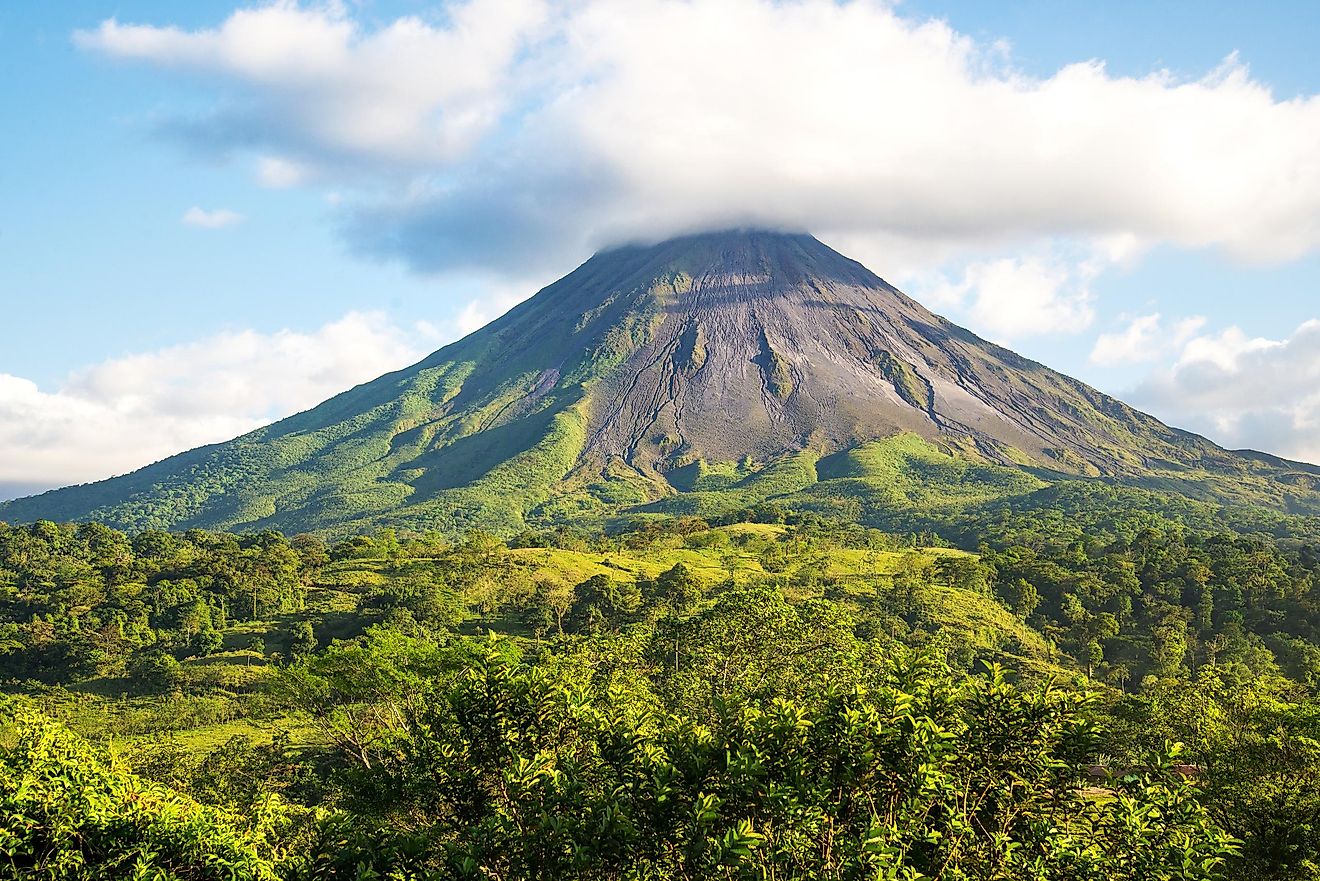
The Different Types Of Caves And Cave Systems
A cave refers to a natural opening in the ground that extends beyond the zone of light and has a height and width that allows the entry of at least a single person by crawling. Widely ranging in size, caves can be formed by various geological processes, which include a combination of chemical processes, tectonic forces, atmospheric influences, the pressure of overlying rocks, microorganisms, and erosion from water. The branch of science that deals with studying and exploring all kinds of caves and cave environments is known as speleology. Speleogenesis refers to the primary process that deals with the formation and development of caves over millions of years. Depending upon their location and mode of formation, caves can be classified into different types. The following article discusses some of the significant types of caves.
Solutional Cave
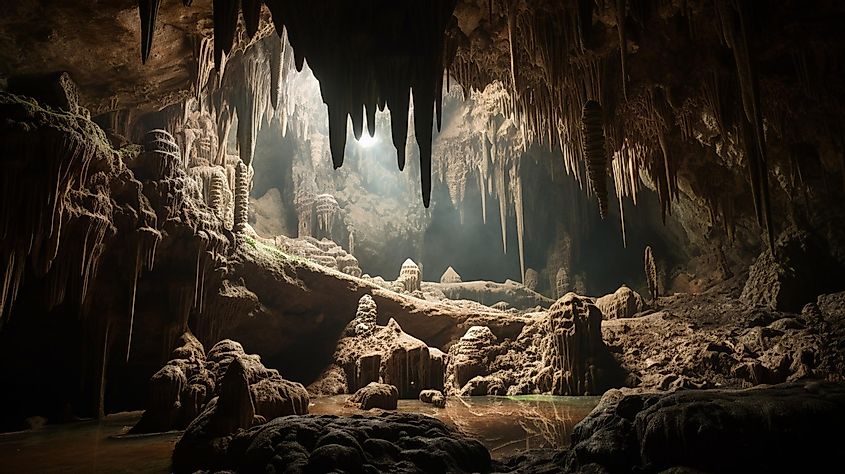
Also referred to as karst caves, solutional caves are the most commonly occurring caves. These caves are formed by the dissolution of bedrock by natural acid in the groundwater that slowly moves via joints, faults, bedding planes, and other surface openings. Over geological epochs, these rock cracks increase in size to form large caves and cave systems. Solution caves are usually found in soluble rock limestone but can also be seen in other rock types like marble, chalk, gypsum, dolomite, and salt.
The most abundant and massive solutional caves are located in limestone. Limestone caves are formed by the dissolution of limestone by rain and groundwater mixed with carbonic acid or other naturally occurring organic acids. This dissolution process results in the creation of a distinctive landform called karst. These picturesque caves are often decorated with various calcium carbonate formations like flowstones, stalagmites, soda straws, columns, stalactites, helictites, and calcite rafts, all of which have been produced through slow precipitation. Some notable examples of limestone caves include Mammoth Cave National Park (Kentucky), Oregon Caves National Monument and Preserve (Oregon), Jewel Cave National Monument (South Dakota), and many more.
Primary Cave Or Lava Cave
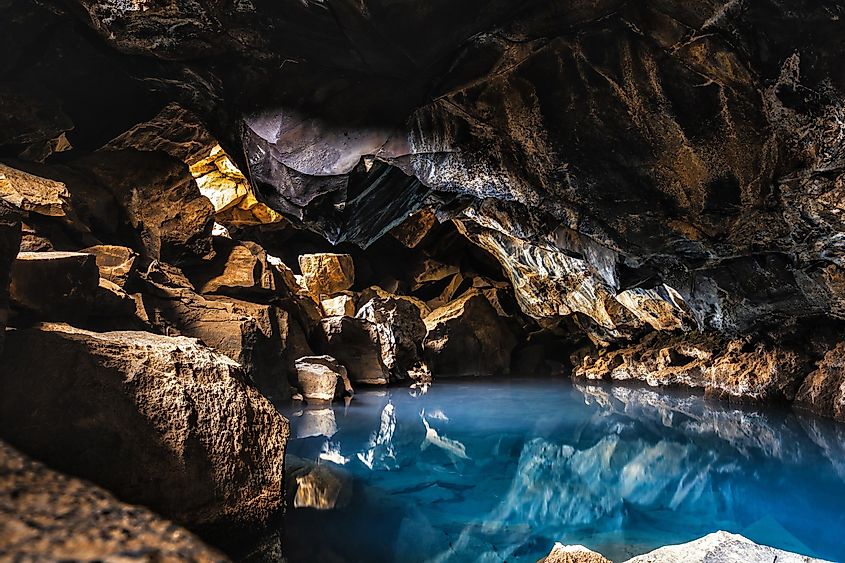
Primary Caves refer to those caves that have been formed at the same time as that of the surrounding rock. The most common type of primary caves is lava tubes formed through volcanic activities. When hot liquid lava flows down a volcano’s slope, the surface of the lava cools and solidifies. However, hot liquid lava continues to flow under the hardened surface, and after most of the lava empties out, a hollow tube remains. Lava molds, inflationary caves, blisters, and open vertical conduits are some other caves formed by volcanic activities.
Studies have revealed that lava tubes have a maximum width of about 46 ft to 49 ft and can vary in length from 3 ft 3 inches to 49ft 3 inches below the surface. Located on the eastern slope of the active Kilauea volcano in Hawaii’s Big Island, the Kazumura Cave having a length of 40.7 miles and a depth of 3,614 ft, is the world’s longest and deepest lava tube.
Sea Or Littoral Cave
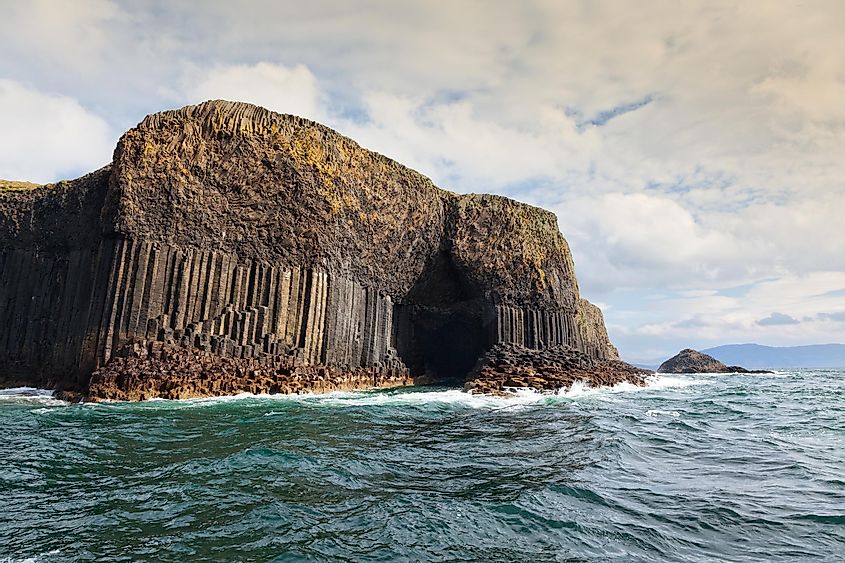
Also known as a littoral cave, sea caves refer to those caves formed by the action of sea waves on fractures in the bedrock of sea cliffs along coastlines worldwide. Sea caves vary in size ranging in length from 16 to 164 ft or sometimes exceeding more than 980 ft. Numerous large sea caves are believed to exist but are yet to be studied due to their isolated locations and hostile sea conditions.
Some sea caves can be accessed by boats only during low tide, whereas others that occur along beaches are easily accessible and can be walked into. Examples of sea caves include Fingal’s Cave on Scotland’s Staffa Island, Southern Italy’s Blue Grotto, Painted Cave in California’s Santa Cruz Island, etc. Having a length of about 1.5 km, Matainaka Cave, located on the Otago coast of the South Island of New Zealand, is considered the world’s most extensive sea cave.
Corrasional Or Erosional Cave
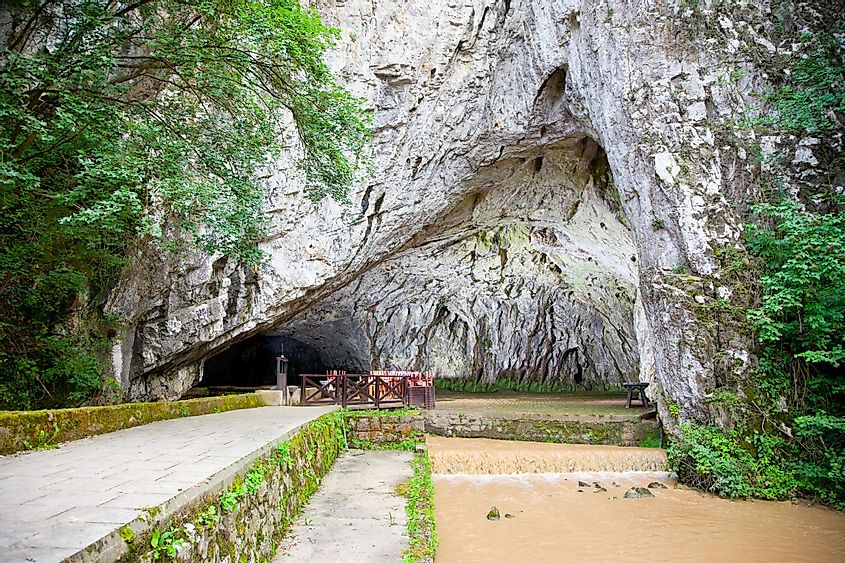
Corrasional or erosional caves refer to those caves that have been formed entirely due to erosion activities of flowing streams that transfer rocks and other sediments. This type of cave can develop in any rock type, including hard rocks like granite. The rock types in which these caves form must feature some weakness zone, such as faults or joints that help in the flow of water.
Eolian Cave
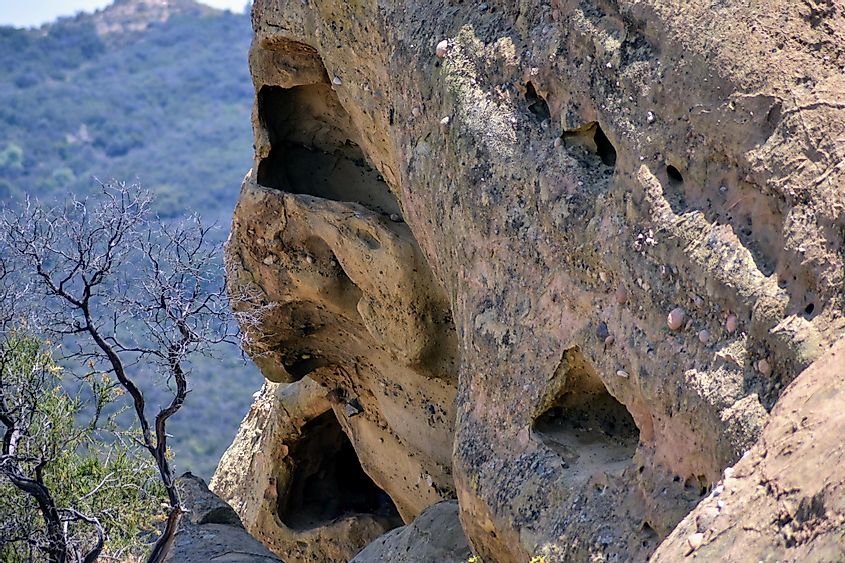
A subtype of erosional caves is Eolian caves, which are chambers about a few tens of meters in length, formed by the action of wind-born sediments in deserts or other dry regions. Over an extended period, the winds erode ceilings, floors, and walls of colossal sandstone cliffs to create a bottle-shaped chamber with a comparatively greater diameter than the entrance. The most notable examples of eolian caves are the White Rocks and Sand Caves located in Kentucky’s Cumberland Gap National Historical Park.
Glacier Cave
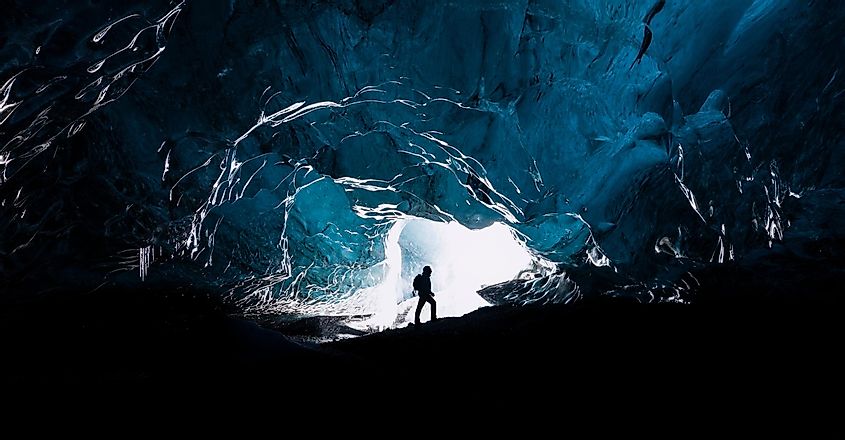
Formed close to the snouts of glaciers, glacier caves are lengthy tunnels placed between the underlying bedrock and glacial ice. This type of cave is created when meltwater from a glacier’s surface moves downward through cracks to the bottom of the glacier. As the temperature of the meltwater remains slightly above the melting point of ice, the heat transfer from the water can lead to sufficient melting, creating an air-filled cavity as it travels downwards along the length of the glacier. The fully-grown glacier caves are usually tubular conduits having floors made of bedrock and ornately sculptured walls. A majority of glacier caves remain filled with water most of the time and can be explored only when their surface is frozen. A well-known example of a glacier cave is the Kverkfjöll glacier cave in the Vatnajökull glacier in Iceland.
Fracture Cave
Fracture caves are formed when layers of soluble minerals dissolve out from between the less soluble rock layers. These rocks then fracture and collapse into blocks of stone.
Talus Cave
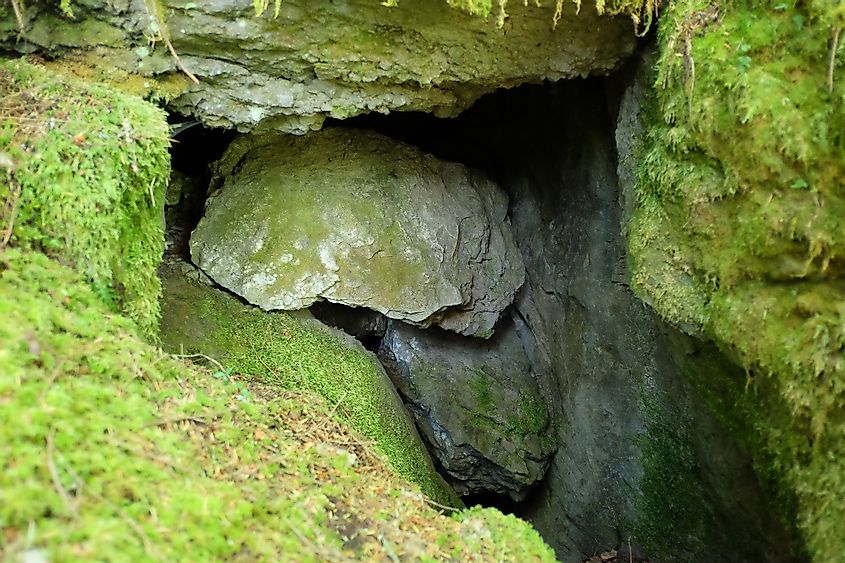
Talus caves refer to the openings formed between large boulders that have naturally fallen and heaped either on mountain slopes or at the bottom of cliffs. These unstable deposits are known as talus or scree and often cause rockfalls and landslides. A majority of these talus caves have minimal lengths and widths. Some of the most extensive talus caves are found among granite blocks in New York and New England, where consolidated systems of passages between boulders have been mapped to lengths varying several kilometers. Located in Central California to the east of Salinas Valley is the Pinnacles National Park, which features numerous talus caves.
Rock Shelters
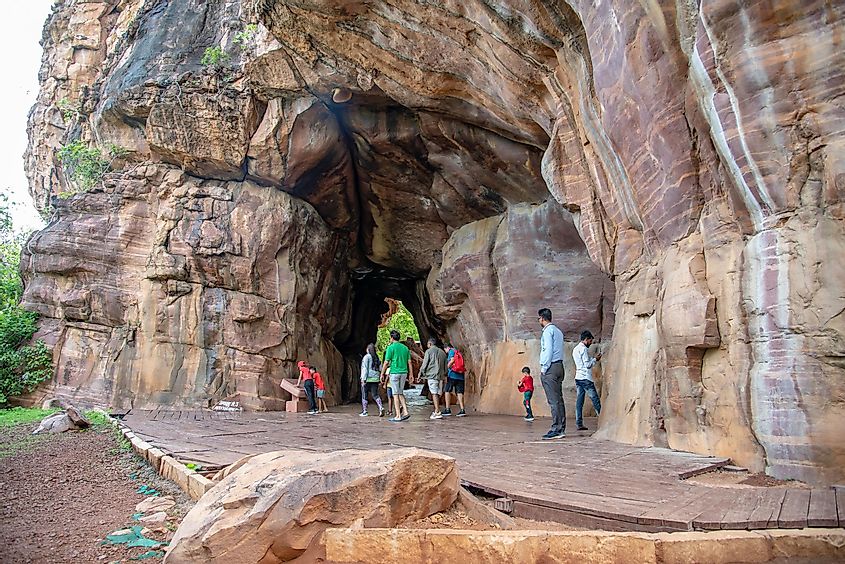
The erosion of bedrock in insoluble rocks leads to the formation of rock shelters. For instance, in areas where a resistant rock like sandstone overlies a relatively weak rock like shale, surface weathering by streams gradually wears away the shale, leaving behind a rock shelter having a sandstone roof. Although they are not complex like other cave types, rock shelters are crucial historical and archaeological sites. A prominent example of a rock shelter is the Bhimbetka rock shelter in Madhya Pradesh, India.
Anchialine Cave
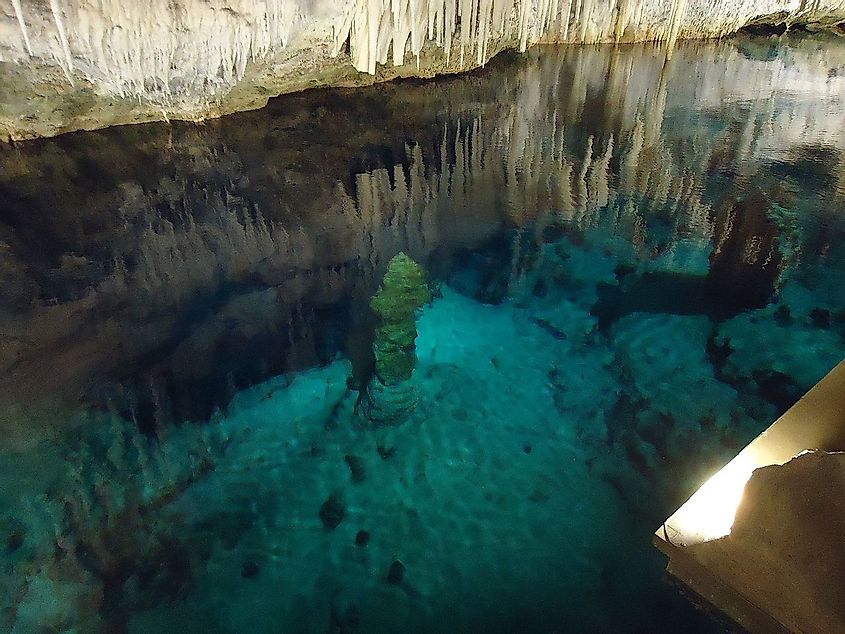
Located worldwide along neotropical coastlines, anchialine caves refer to those caves that are hydrographically linked with the sea as well as other continental systems. As a result, anchialine caves link the sweet water of the inland waterbody with the saline water from the sea. Therefore, a common attribute of these caves is “halocline,” which involves a vertical transition from fresh to saline water. Anchialine caves are usually found in lava fields and karst landscapes and are known to support highly specialized endemic fauna. As per researchers, chemoautotrophic bacteria is located in the halocline in some anchialine caves and serve as an energy source for a unique community of organisms.
Caves are some of the most impressive formations on Earth that have aroused a great interest in humankind since immemorial times. These fragile natural resources house a variety of archaeological and paleontological records since they served as homes to many primitive humans throughout history. A series of caves located close to the South African cities of Krugersdorp and Mokopane revealed the presence of the earliest human fossils. Moreover, caves serve as vital habitats for many unique and endangered species. Nevertheless, caves have played a crucial role in unraveling many secrets of human history and, therefore, must be preserved for future generations.
